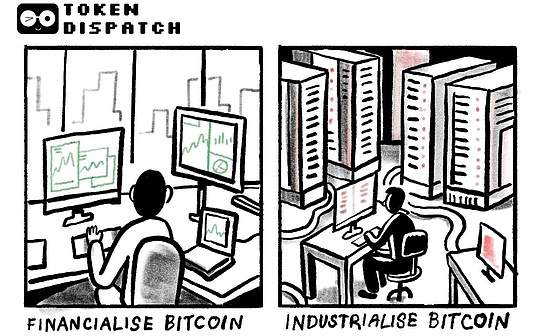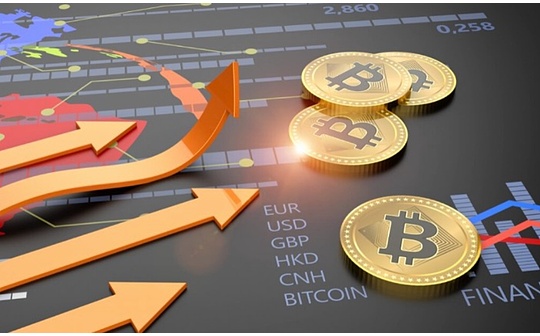
Recently, both Bitcoin and Ethereum have set new lows.
Once upon a time, these two chains were known as “noble chains” because of their high transaction costs, and were the place where the entire industry consumed the most user handling fees.But in recent months, Bitcoin’s miner fees have basically returned to their all-time lows of 1sat/vbyte, and Ethereum’s Gas fees have also fallen back to a level of 00:00 Gwei.
It’s time to kill memories again, and share some past events in the currency circle.Recalling several “outrageous and real” stories about miners’ fees on Bitcoin.
The exchange withdraws coins and miners’ fees have been paid to the sky
Around 2017, I experienced a “crisis” caused by miners’ fees.
At that time, I was about to withdraw a bitcoin from an exchange, but after submitting the application, I found that the transaction could not be confirmed on the link.After I went to the blockchain browser to view the details of this transaction, I found that the transaction contained a huge number of transaction inputs (UTXOs) with extremely small denominations.
The size of a transaction (in bytes) depends on the number of inputs and outputs.The more inputs are, the larger the transaction volume is and the higher the miner’s fee is required.
However, the exchange adopted a fixed fee withdrawal strategy at that time and did not dynamically adjust the fees based on the actual “volume” of the transaction.This led to my transaction being severely insufficient due to miners’ fees, and the mining pool recognizes money but not people. My transaction was ruthlessly abandoned by miners across the Internet.
Based on the network congestion at that time and the huge volume of this transaction, the actual miner fee was as high as 0.5+ bitcoins – judging from today’s price, this is really a huge sum of money.
Let me explain the technical principles in a little bit:
As the news said before, a bus company pulled several trucks of coins to the bank to deposit money, and the bank needed to mobilize dozens of employees and spend several days to count.The manpower and material cost consumed in this process may be higher than the total amount of coins received.
Similarly, in the Bitcoin network, the integration of a large amount of scattered UTXO into a large amount of funds also requires huge miner fees.
I contacted the exchange customer service and hoped that they could help speed up transactions, but the reply I received was an official rhetoric such as “This is the characteristic of blockchain, please be patient.”Customer service just wants to pay for it.
I trace the origin of this transaction.By analyzing the on-chain data, I pieced together an amazing inference: the exchange’s hot wallet system is likely to have encountered a “dust attack”.
Over a period of time, the attacker continuously sent thousands of extremely small bitcoins to the recharge address of the exchange’s hot wallet (for example, UTXO slightly above the dust transaction threshold of 546 Satoshi).
When ordinary users initiate withdrawals, the exchange’s wallet system will automatically grab these fragmented UTXOs as transaction input, thereby building an extremely “bloated” transaction.But the miner’s fee is given a fixed value, and these withdrawal transactions are stuck.
I guess this may have been a malicious means of competition within the industry at that time.
In fact, it is very common for the early “attack” of using offchain wallets to sort out fragmented coins.Up to now, various exchanges have technically banned such attacks, such as miners are not allowed to withdraw coins and directly mention the exchange.Now the exchange’s currency withdrawal system also supports dynamic adjustment of miner fees according to transaction size.
In the end, because I urgently used the funds, I had to pay out my own pocket and contact a mining pool. I paid a high fee to “take out” the transaction.Looking back, that’s so much money, damn it.
“Good Culture” and “Ingenious Conspiracy”
The Bitcoin mining pool community has an unwritten “good culture”: when the block they package contains a transaction that pays an unusually high fee, most mining pools often choose to return this “sweep” to the sender.
This kind of thing is common in the history of the currency circle.The earliest case I remember can be traced back to around 2013, when the famous “Grilled Cat Mining Pool” returned a huge amount of abnormal miner fees to users.
Since then, similar news seems to appear almost every year.The mining pool did not regard this profit as a split, but instead actively contacted the users who made the mistake and returned the funds.
In a world where the currency circle recognizes money but not people, the Bitcoin mining pool circle is still quite kind.
However, this seemingly “kind” mechanism may also be used by people with ulterior motives and become a clever “coin mixing” strategy.
The miner’s fee for a Bitcoin transaction is equal to its total input minus the total output.This fee will eventually be packaged into the Coinbase transaction of the block as part of the block’s reward.A Coinbase transaction is the first transaction in a block. It has no regular input and is created by the miner “out of thin air” to give himself a reward.This means that once your funds enter the Coinbase transaction through the form of miner fees, all previous history is cut off.
Suppose you have a bitcoin in an address marked as “black money” by law enforcement agencies, how do you clean it?You can build a special transaction: the input is 1 BTC of this “black money” address, but the output address only receives 0.001 BTC.Then, the difference of up to 0.999 BTC will all become miner’s fees.When a mining pool packages the transaction, the 0.999 BTC is integrated into the pool’s Coinbase reward, completely separated from its past history.
Next, you just need to contact the pool and negotiate a commission ratio to get the “clean” bitcoin reward to the new address you specified.The whole process was seamless and a brilliant money laundering was completed.
The extremes of history: those jaw-dropping deals
Looking back at the long history of Bitcoin, there are always some extreme transaction records that make us talk about:
The highest miner’s fee in history:On December 12, 2011, a transaction txid:1d7749c65c90c32f5e2c036217a2574f3f4403da39174626b246eefa620b58d9 made history.It sent out 207 bitcoins, and the final receipt address only received 35.77, of which up to 171.79869184BTC bitcoins were paid as miners’ fees.Based on today’s price, the handling fee is worth nearly 20 million US dollars.
The most “stingy” giant whale in history:In sharp contrast, there was an amazing transaction in history, which transferred more than 500,000 bitcoins at one time, but the miner’s fee paid was zero.txid:044e32f5e01d70333fb84b744cb936bf49acab518282c111894b18bcf3a63c12.
This holder who is rich enough to rival a country is truly a stingy person.
There are so many interesting past events in the currency circle, but unfortunately there are not many coins, only stories left.
Let’s summarize the ETH version of gas story tomorrow.






